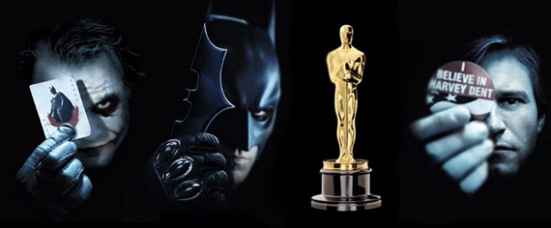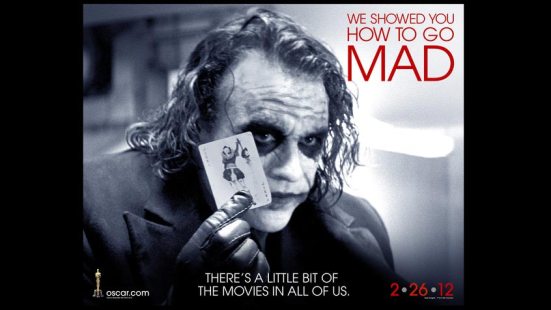If you know a little bit about the history of the Academy Awards, you know that the number of Best Picture nominees has changed over the years.
When the awards first began in 1929, 3 films were nominated for Best Picture (then called Outstanding Picture). And then, for each of the three years that followed, 5 films were nominated for the top prize. The number of nominees expanded to 8 in 1933, to 10 in 1934, and to 12 the following year in 1935. From 1937-1944, there were 10 nominees. And then, from 1945 on, the Academy determined that there should be just 5 films nominated for Best Picture.
It all worked out pretty well for a while, until time wore on and more and more Oscar hopefuls were left with nothing but a pat on the back for a nice try. Historically, comedies and sci-fi films and blockbusters have been essentially “locked out” of the awards’ biggest category. The people of Hollywood like money, but they like recognition, too.
So, in 2009, the number of Best Picture nominees changed again, back to 10 films. Why? If you believe the Academy, it was done to “restore the Oscars tradition of old” by allowing various types of films to be recognized, from independent films to sentimental flicks to big-time blockbusters.
And there is a grain of salt to that.
A large grain.
A Gotham-sized grain, in fact.
This change from 5 to 10 Best Picture nominees came in 2009, in the months following director Christopher Nolan’s first real taste of Academy Awards snub-dom.
Sure, 2008’s The Dark Knight, a jaw-droppingly popular blockbuster (#8 on IMDb) that scored well with critics (94% Tomatometer, 82/100 MetaCritic) and audiences ($533M domestic box office, $1B worldwide) alike, earned 8 Oscar nominations and took home 2 trophies. So how is that a snub?
Below is a list of The Dark Knight‘s Oscar nominations. See if you can spot what’s missing.
- Supporting Actor (Heath Ledger) — WON
- Film Editing
- Art Direction
- Visual Effects
- Costume Design
- Makeup
- Sound Editing — WON
- Sound Mixing
Heath Ledger got the Oscar he deserved. And the film picked up a technical achievement award (Sound Editing), one of the at least 3 that it deserved, the others being Visual Effects and Sound Mixing. So where’s the snub?
How about that Best Picture nomination? The films nominated for Best Picture that year were Slumdog Millionaire (Winner), The Curious Case of Benjamin Button, Frost/Nixon, Milk, and The Reader. While 2 or 3 of those deserved their Best Picture noms, I can think of five films in that list that were below The Dark Knight in terms of quality of film.
And don’t forget Best Director, where each of the five Best Picture nominees’ directors were nominated as well, leaving no room for Christopher Nolan and his ginormous box-office smash hit. You could also argue that the Academy missed out on recognizing it for Score, but that’s just nitpicking.
The interesting thing about the nominations that year was that the Academy nominated The Dark Knight for Best Film Editing, an award that is very closely tied to the Best Picture Category. Clearly, the Academy felt the impact of the film in some way, but they couldn’t pull the trigger on nominating it for Best Picture.
There were a few other notable films on the outside of the Best Picture race looking in when the Oscars rolled around.
WALL-E.
Gran Torino.
The Wrestler.
If we are just talking personal opinion, you could throw Iron Man in there. But let’s not get too carried away. If I were to go in and re-assess the Best Picture category based on the 5-nominee system, here’s what I think it could look like: replace The Reader, Milk, and Benjamin Button (it was tough, but I had to) with The Dark Knight, WALL-E, and Gran Torino, and here’s what you get:
- The Dark Knight
- Frost/Nixon
- Gran Torino
- Slumdog Millionaire
- WALL-E
I do think that Button and Frost/Nixon are pretty interchangeable, but overall I think that the above group is far more appropriate than the 5 actual nominees. And the Academy recognized, too, that they probably didn’t get it right. So along came the rule that has been dubbed by bloggers, critics, and those in the industry alike as “The Dark Knight Rule.”
In 2009, to ensure that another debacle similar to the one from the previous year would not occur again, we got 10 nominees, which included Pixar’s Up, crowd pleaser The Blind Side, and sci-tech favorite District 9. The world’s highest-grossing fim, Avatar, was included as well, but it would have been in the field regardless.
The following year (last year), there were also 10 nominees, including Nolan’s smash-success Inception.
In some way, the Dark Knight Rule was beneficial: we could have an eclectic mix of artistic films and independent films and box-office hits. So, it was a good move, right?
That depends; it’s a two-faced problem, no pun intended. With 5 nominees, there were times when films were just flat out snubbed, and there were times when there just weren’t enough nominations to go around. And then with 10 nominees, you began to see that there were a few spots that could have just been eliminated. Films were nominated to fill spots, not because the nomination was merited.
Do you really think that The Blind Side or District 9 deserved a Best Picture nomination? I, for one, don’t. The move was a step in the right direction, but when there are 10 fixed nominees, there are going to some years where undeserving films in a weak pool get the chance to swim with the big boys.
The Academy realized this; they were filling up some of those extra 5 spots with fluff. And so they altered the rules again in time for this year’s Oscars, this time to a variable number of nominees (between 5 and 10 in any given year) based upon how many first-place votes each film got.
Why?
Batman.
Er, more specifically, The Dark Knight.
What the Academy has now seemingly tried to do is cover its missteps, and it just may work with this new format. If there aren’t 10 strong candidates, there can be 5 or 6 nominees; if there are a bunch of strong players, the field can be as large as 10.
Going back a few years, we can look at the nominees and see who is missing and how many nominees there really should have been. You could make the case that 2006’s The Prestige (director: Nolan, coincidence: no) deserved to be nominated alongside films like The Departed and Letters from Iwo Jima. And I think that two potentially glaring omissions to the 2007 field were the underrated Gone Baby Gone and the understated 3:10 to Yuma.
And there probably could have been 6 or 7 films in 2008 that were nominated for Best Picture.
There is no denying that this new nomination process is better than a fixed 5 or 10 nominees. However, while they can fix the process, and they can fix the rules and try to work out the issues going forward, the Academy can’t undo the past and award The Dark Knight a “better late than never” nomination. And sometimes they still may not get it right, such as this year’s oversights, Drive and The Girl with the Dragon Tattoo, as well as this year’s “are you sure?” nominations Extremely Loud & Incredibly Close or War Horse (I have not seen these films personally, but based on numerous reviews and the films’ reputations, I’m more than skeptical).
Maybe this new voting format, the first amendment to the Dark Knight Rule — let’s call it The Dark Knight Rule 2.0, for lack of a better term — will be more incentive for the Academy to nominate a film like, say, The Dark Knight Rises if it is anywhere near the caliber of its predecessor.
Only time will tell.


